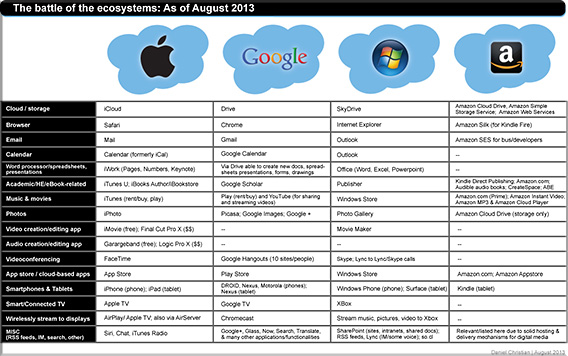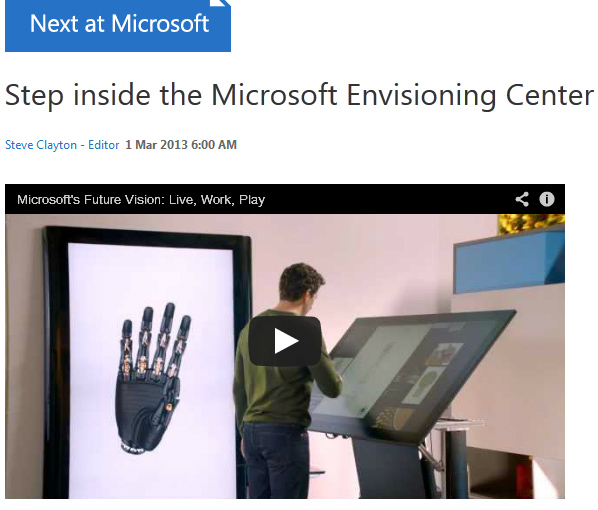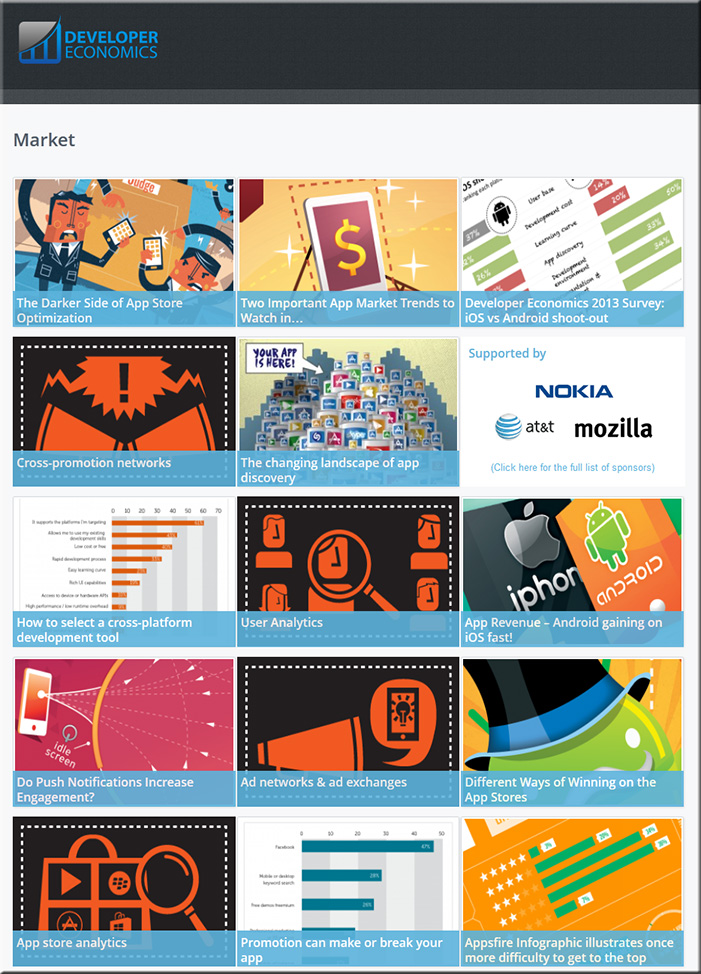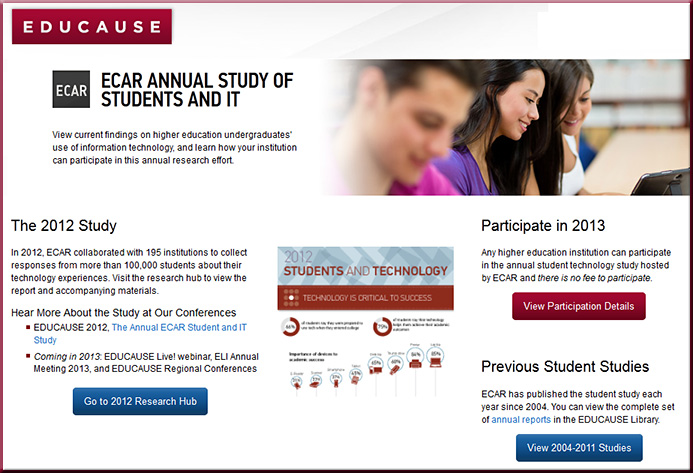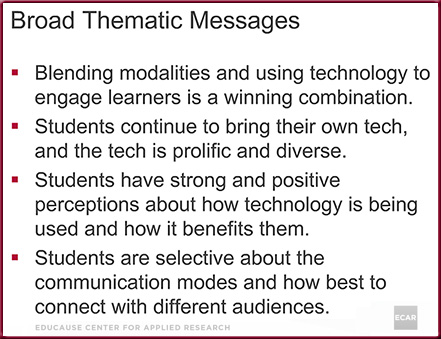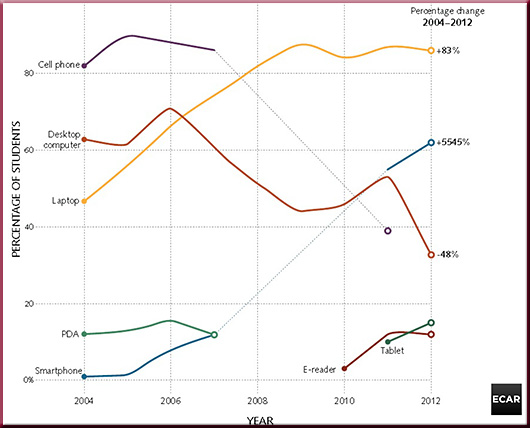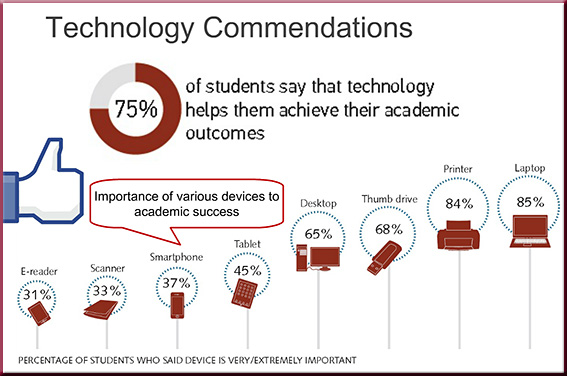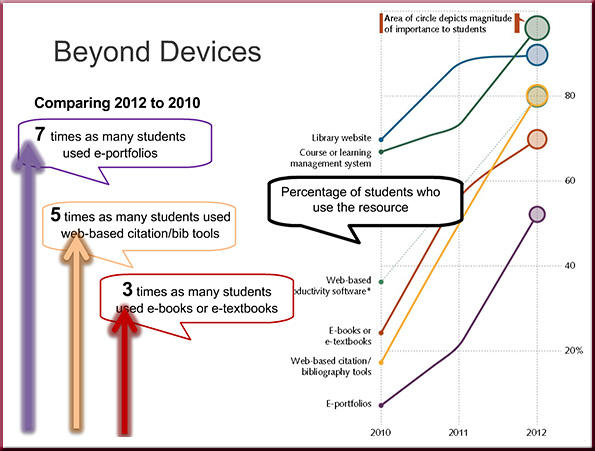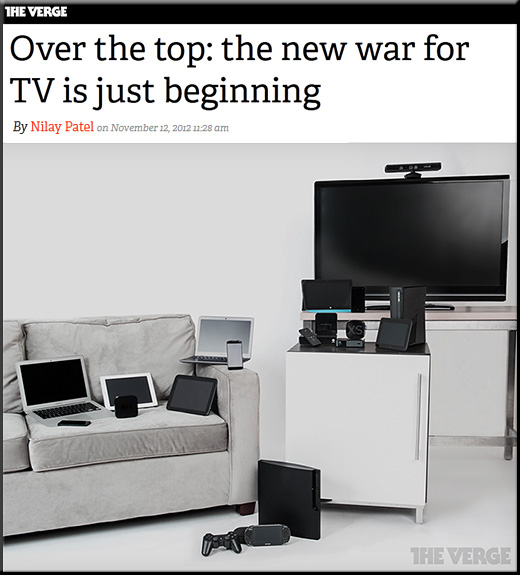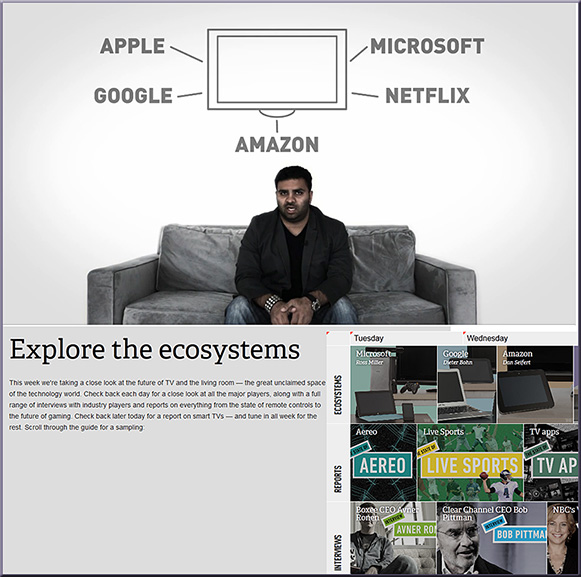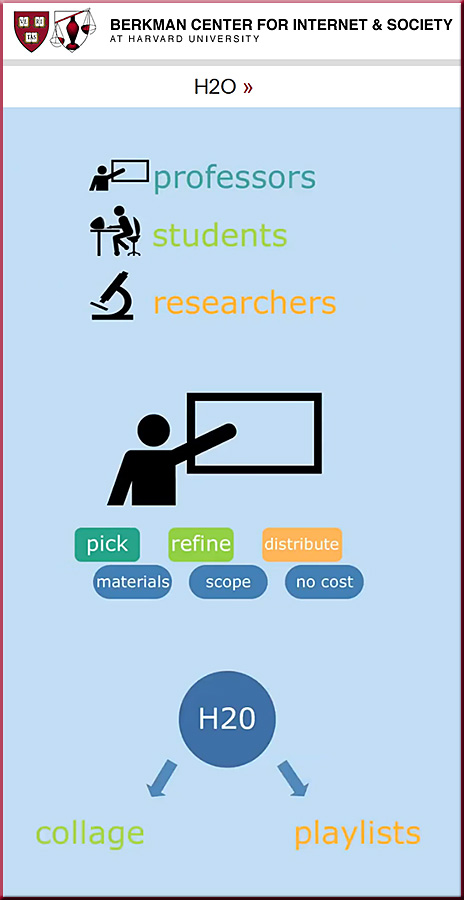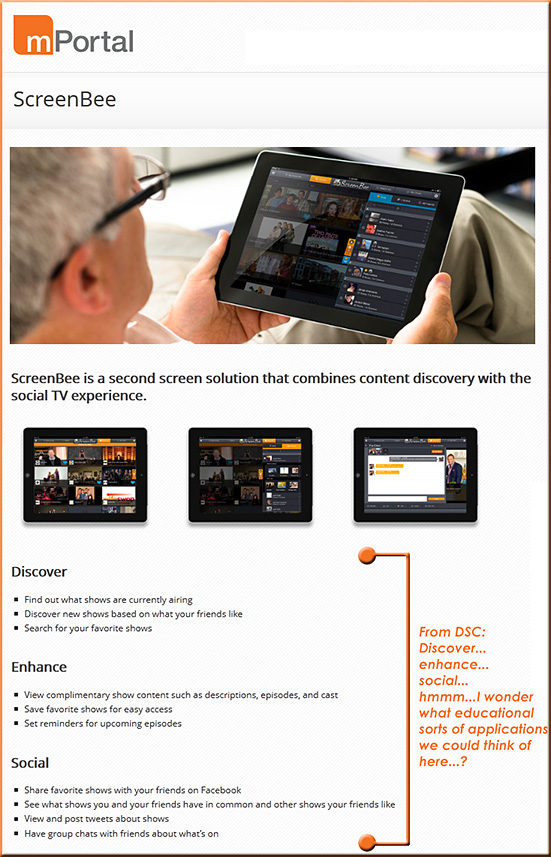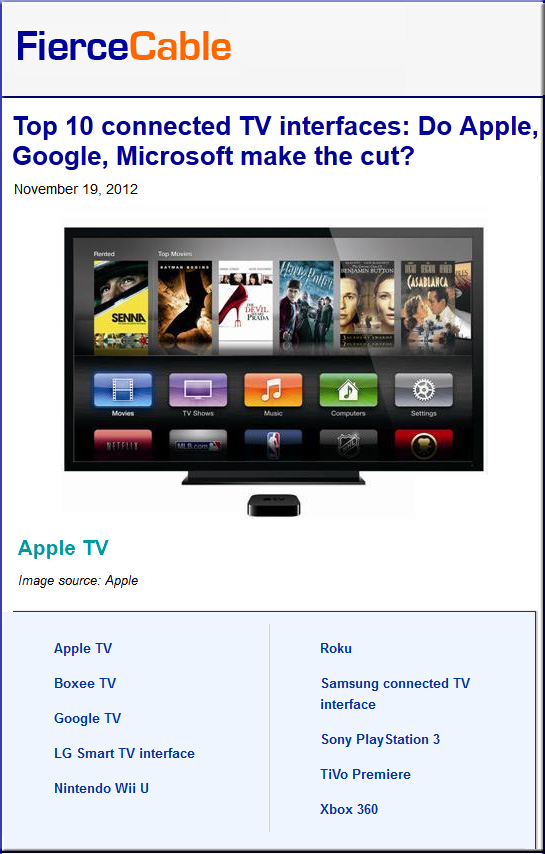Microsoft joins Degreed’s crusade to ‘jailbreak the degree’ – from gigaom.com by Ki Mae Heussner
Excerpt:
Degreed, a San Francisco startup taking on traditional degrees and diplomas with a digital credential that reflects lifelong learning, has recruited its first corporate partner to its corner.
This week the startup said it will launch a partnership with Microsoft Virtual Academy, the tech giant’s online IT training site, which will give students who complete the program’s classes a way to display their achievements on Degreed.
From DSC:
AT&T and Georgia Tech.
Google and edX.
Microsoft and Degreed.
IBM sending Watson to school and partnering with 1000+ universities (see here and here).
JP Morgan and University of Delaware (see this addendum from 10/7/13)
Is there a new trend forming here?










![The Living [Class] Room -- by Daniel Christian -- July 2012 -- a second device used in conjunction with a Smart/Connected TV](http://danielschristian.com/learning-ecosystems/wp-content/uploads/2012/07/The-Living-Class-Room-Daniel-S-Christian-July-2012.jpg)

